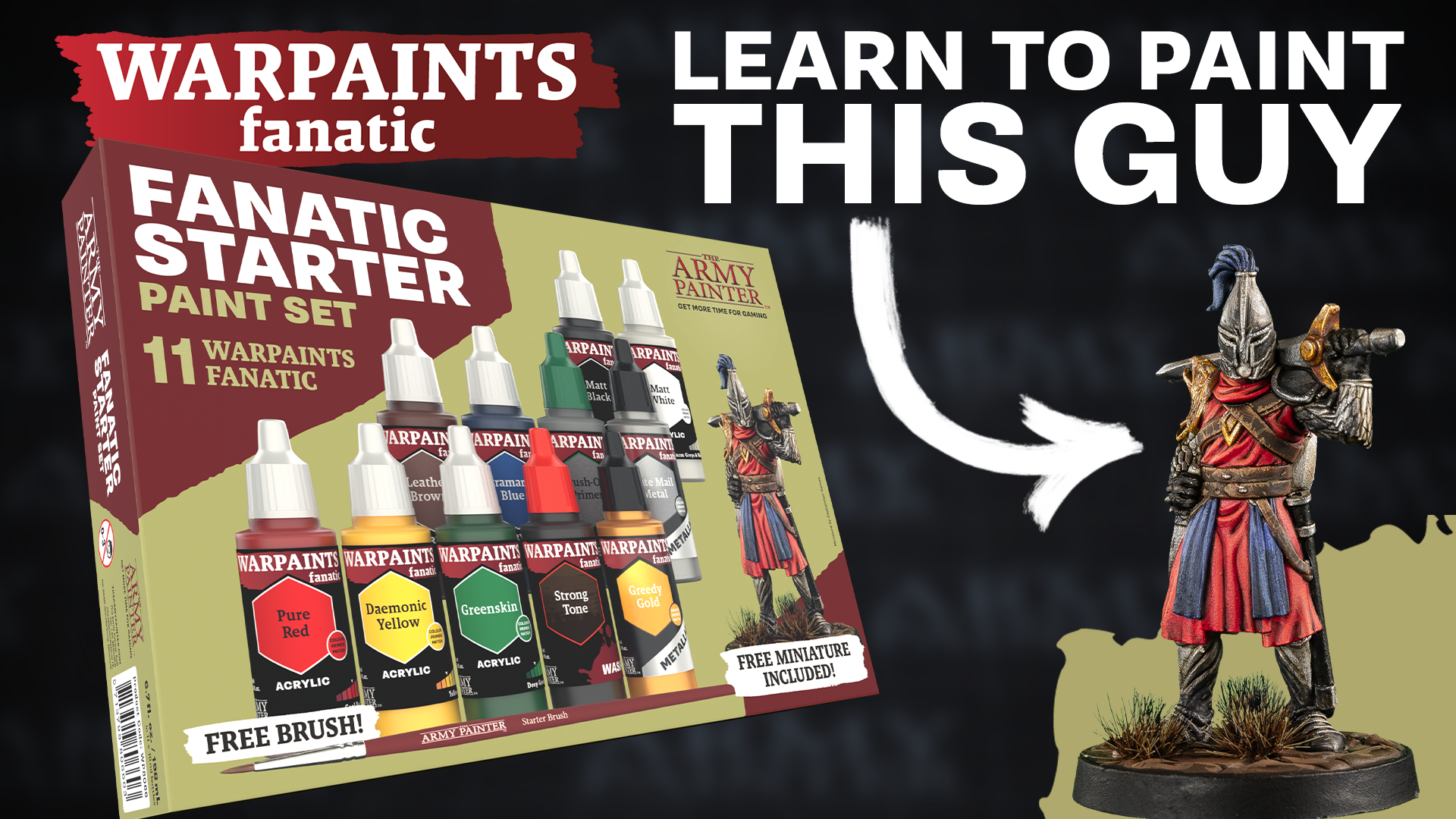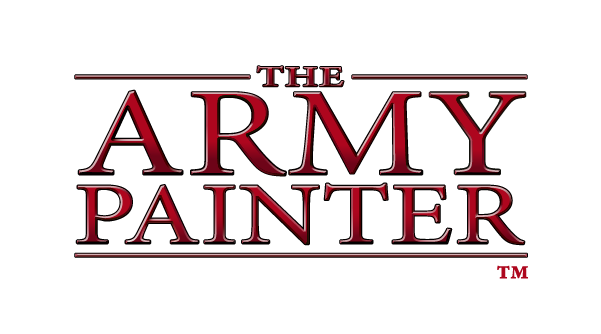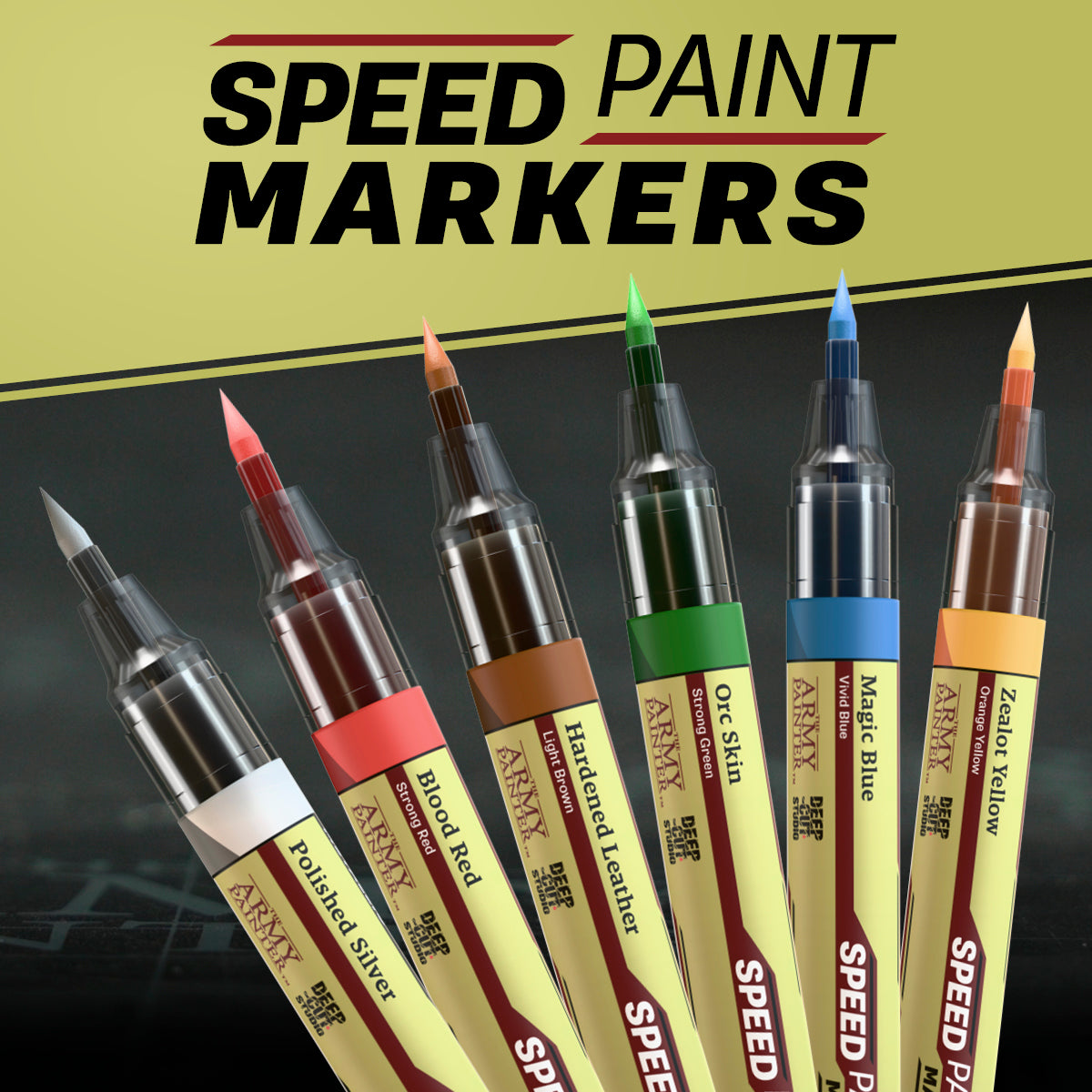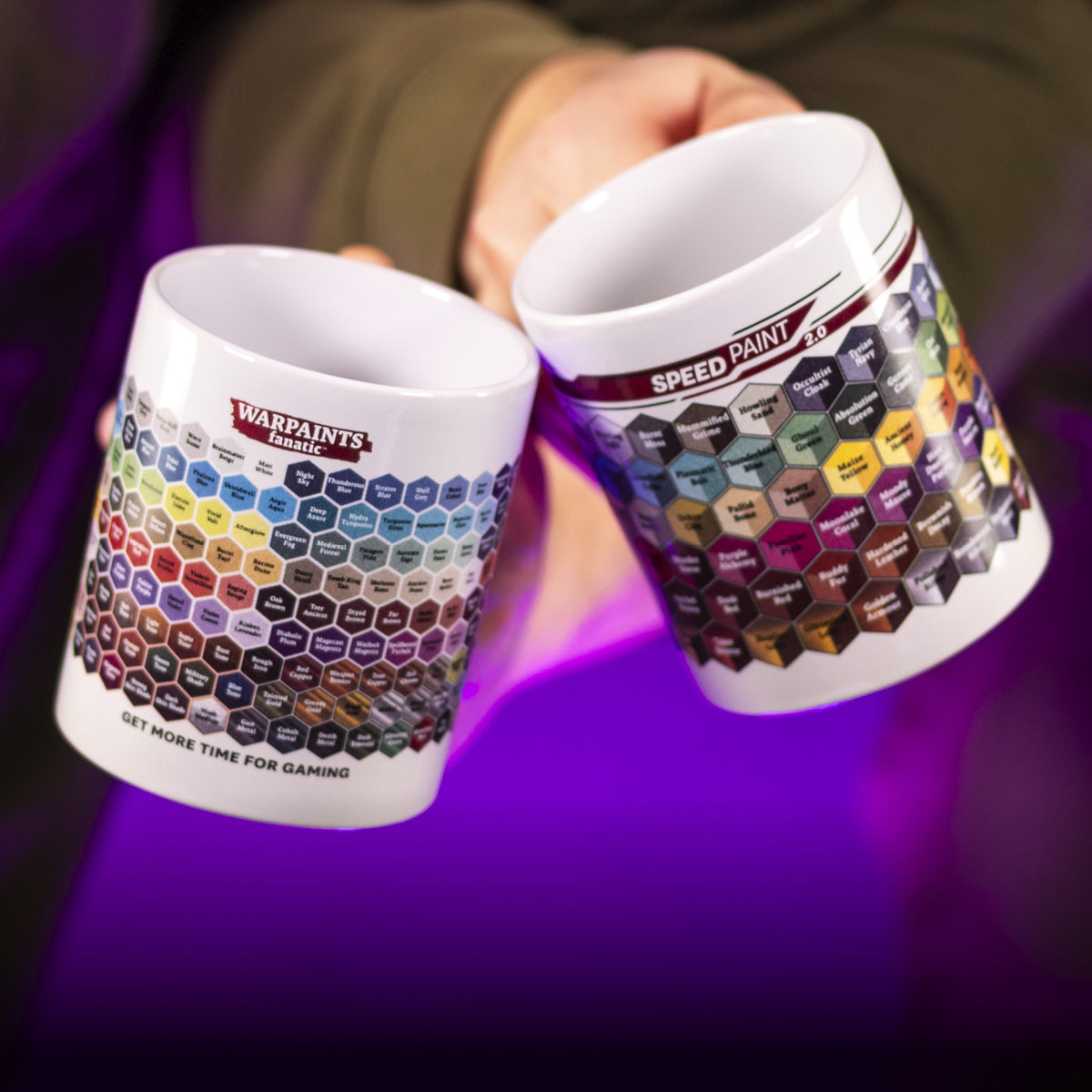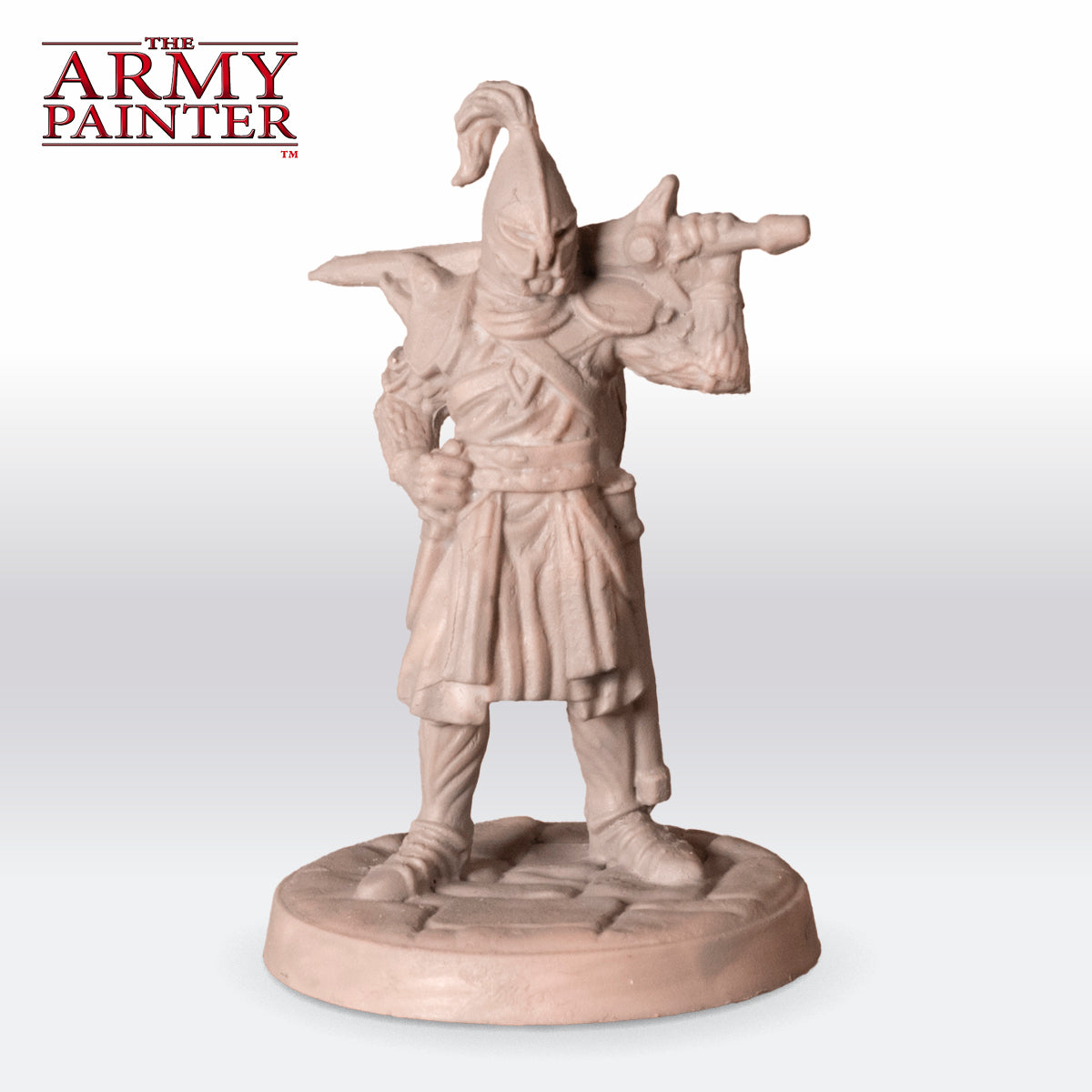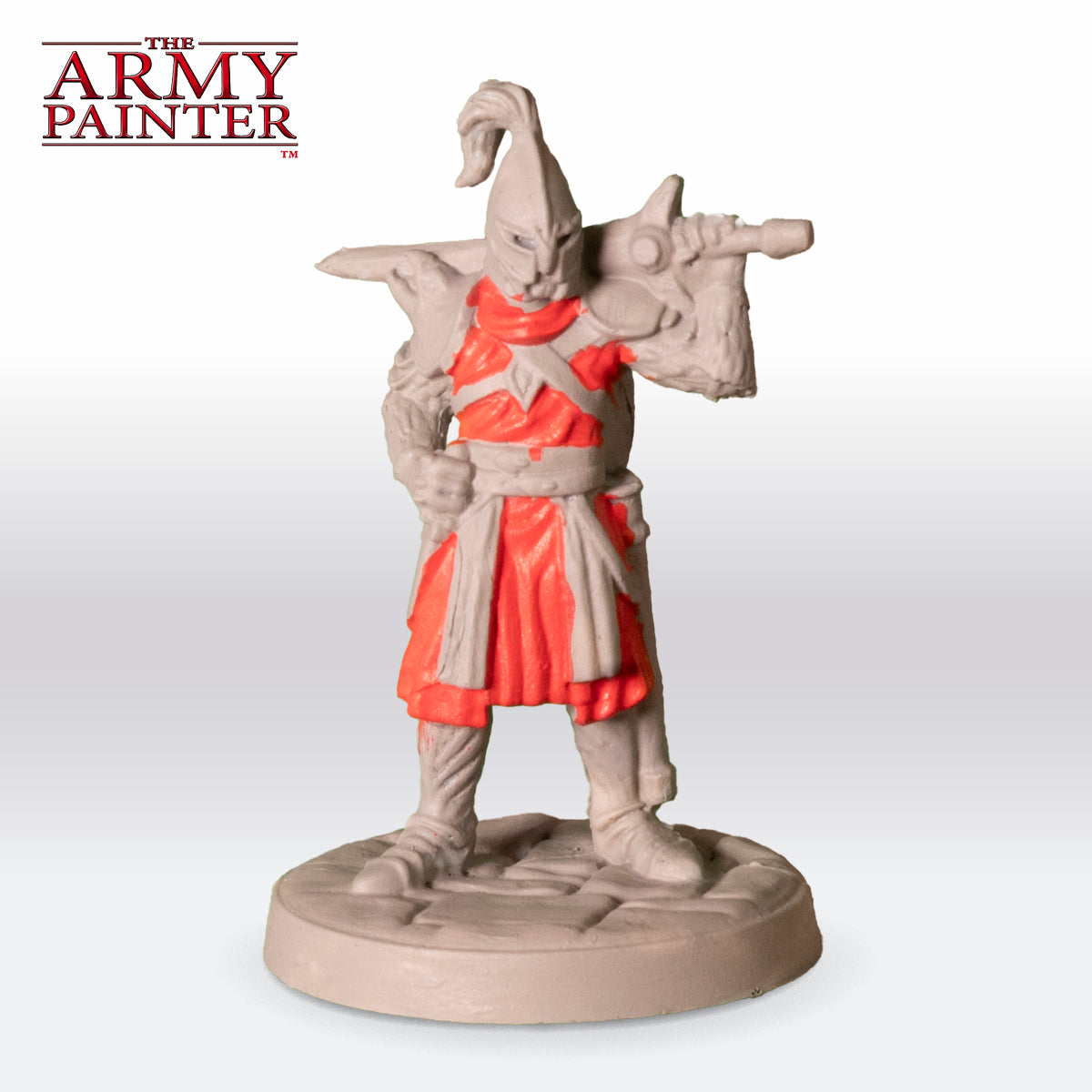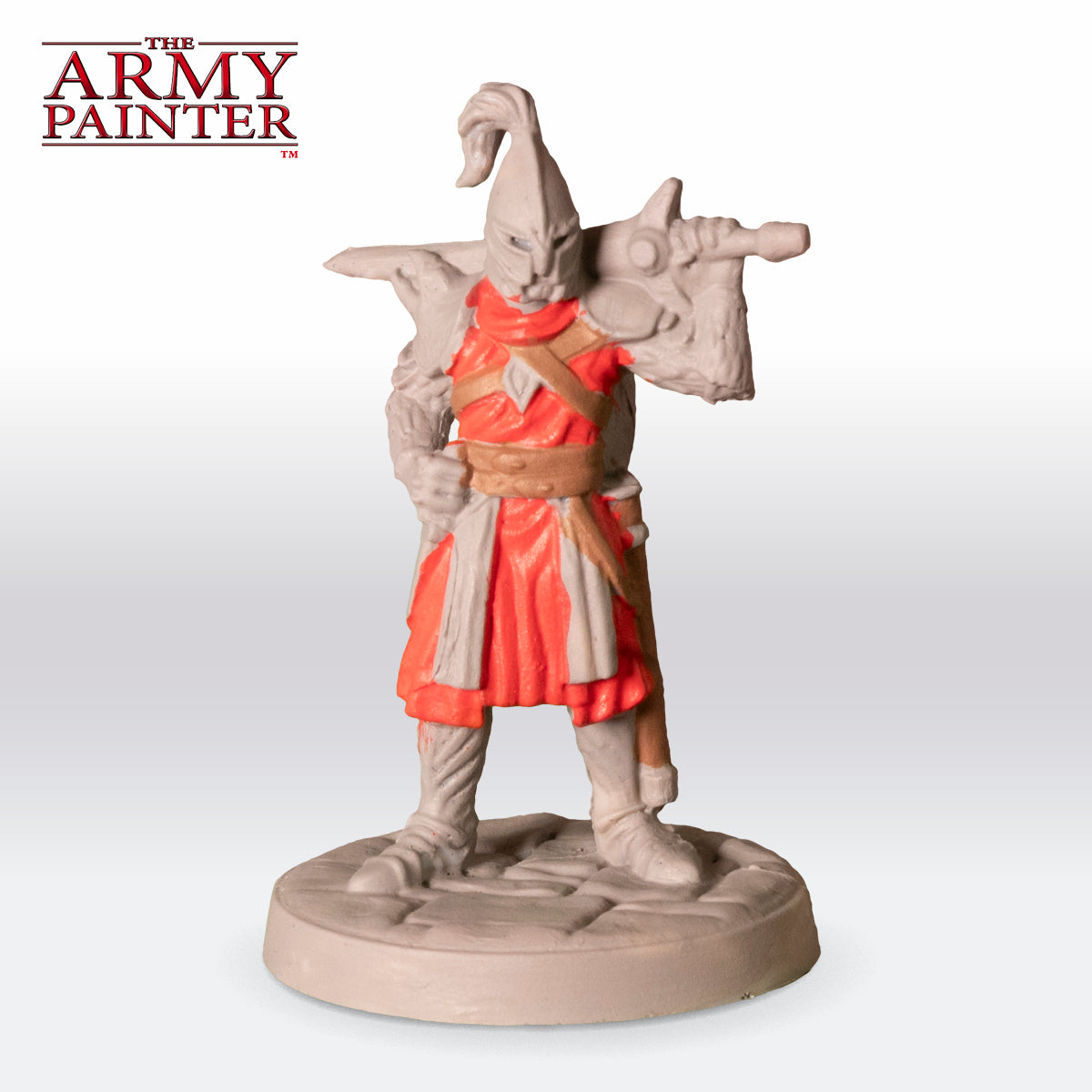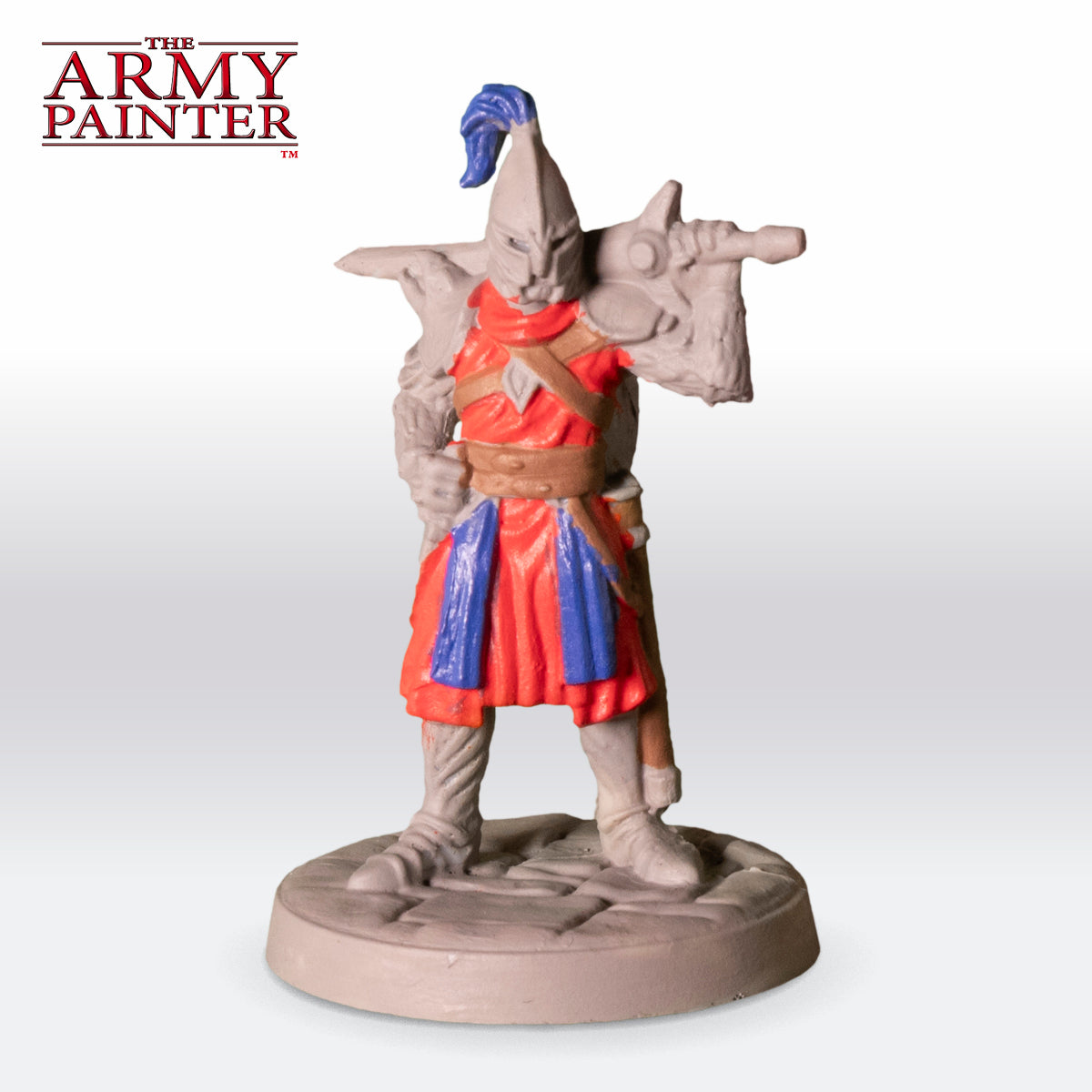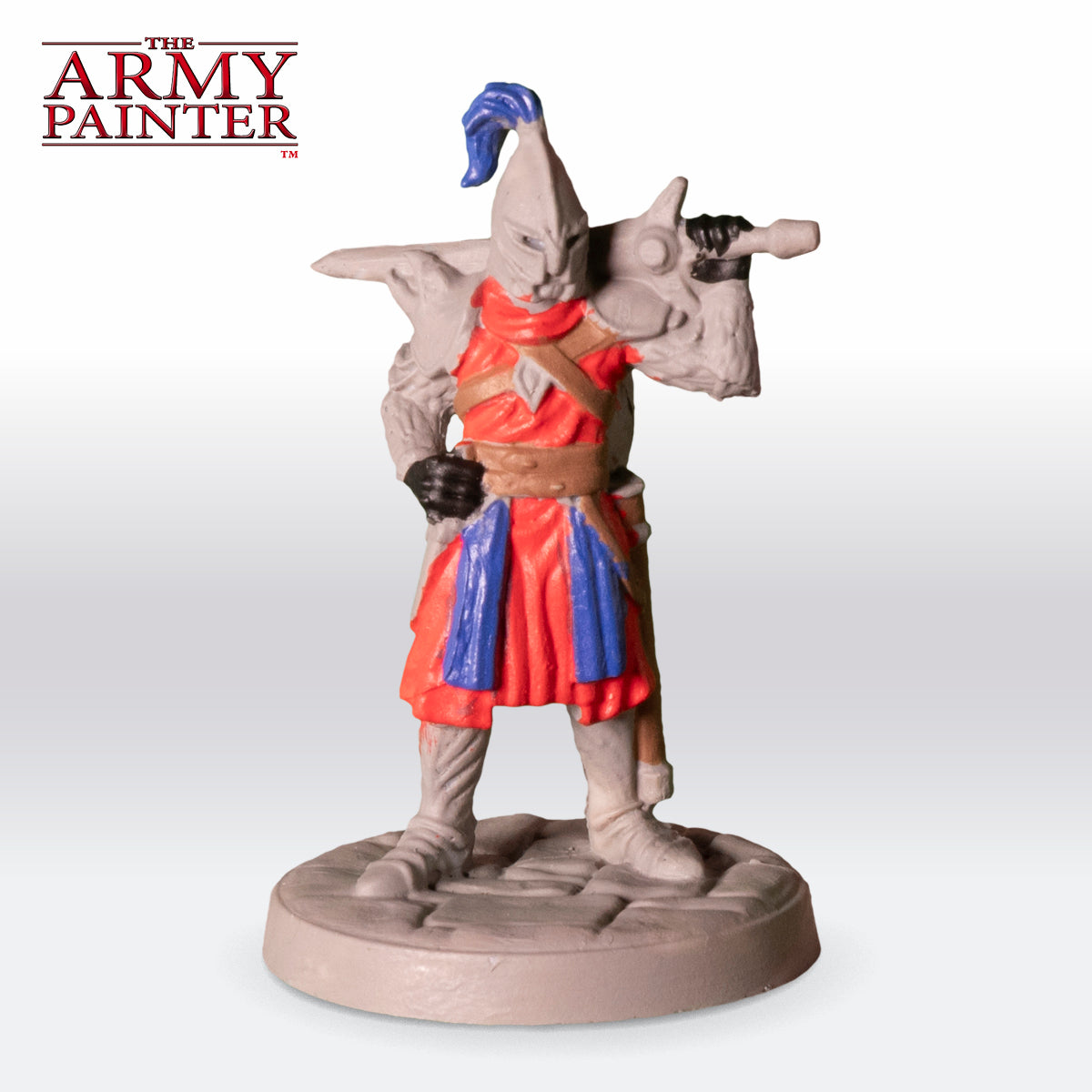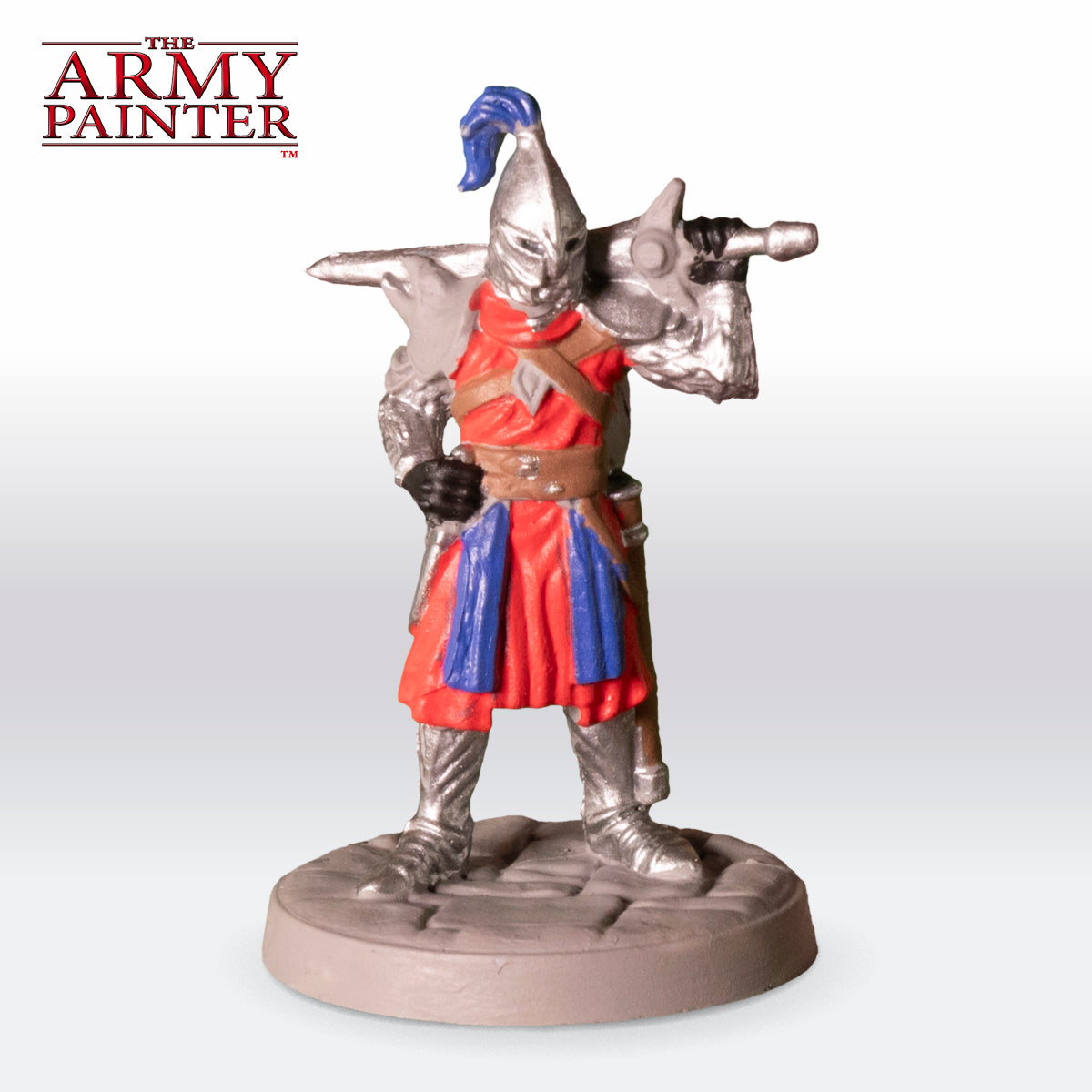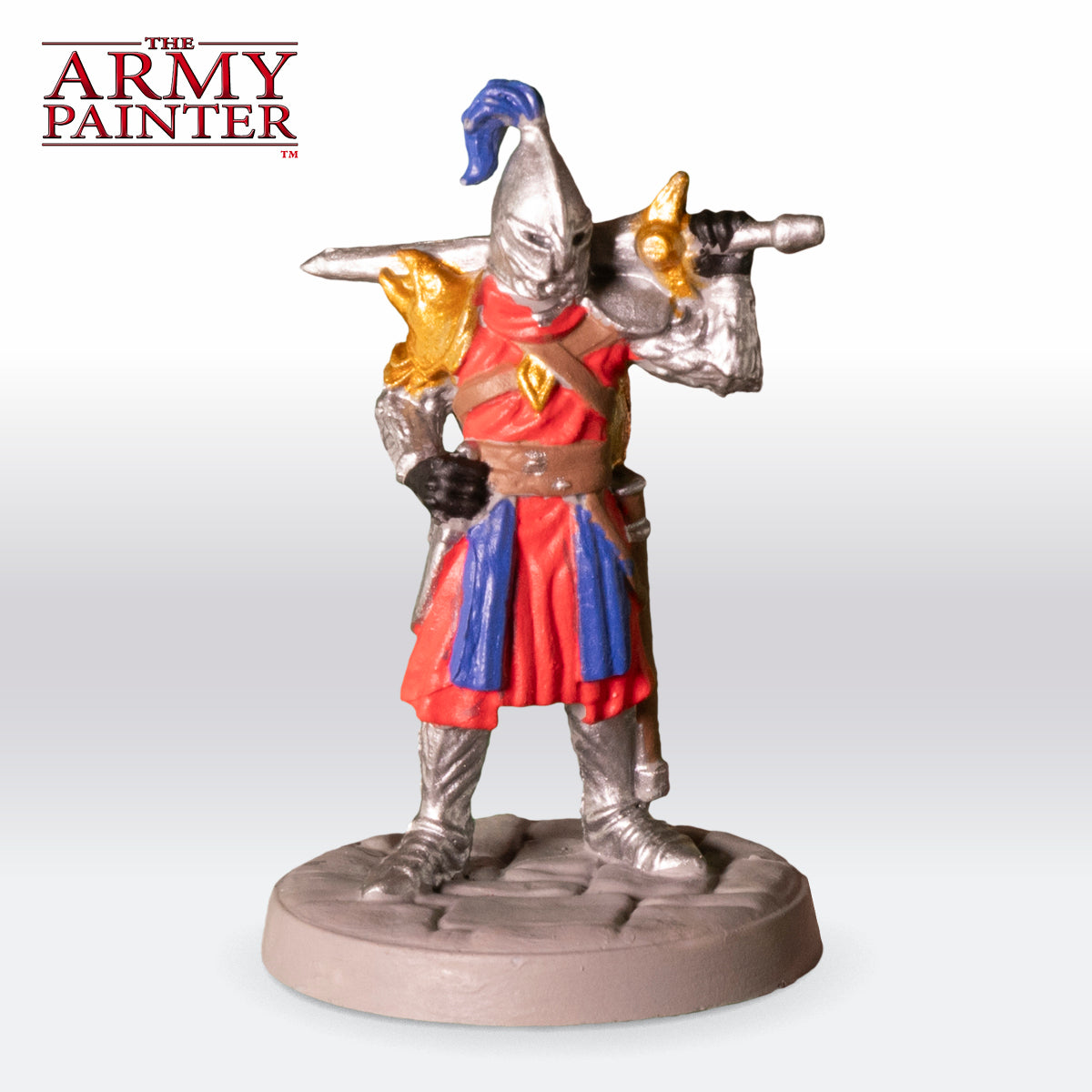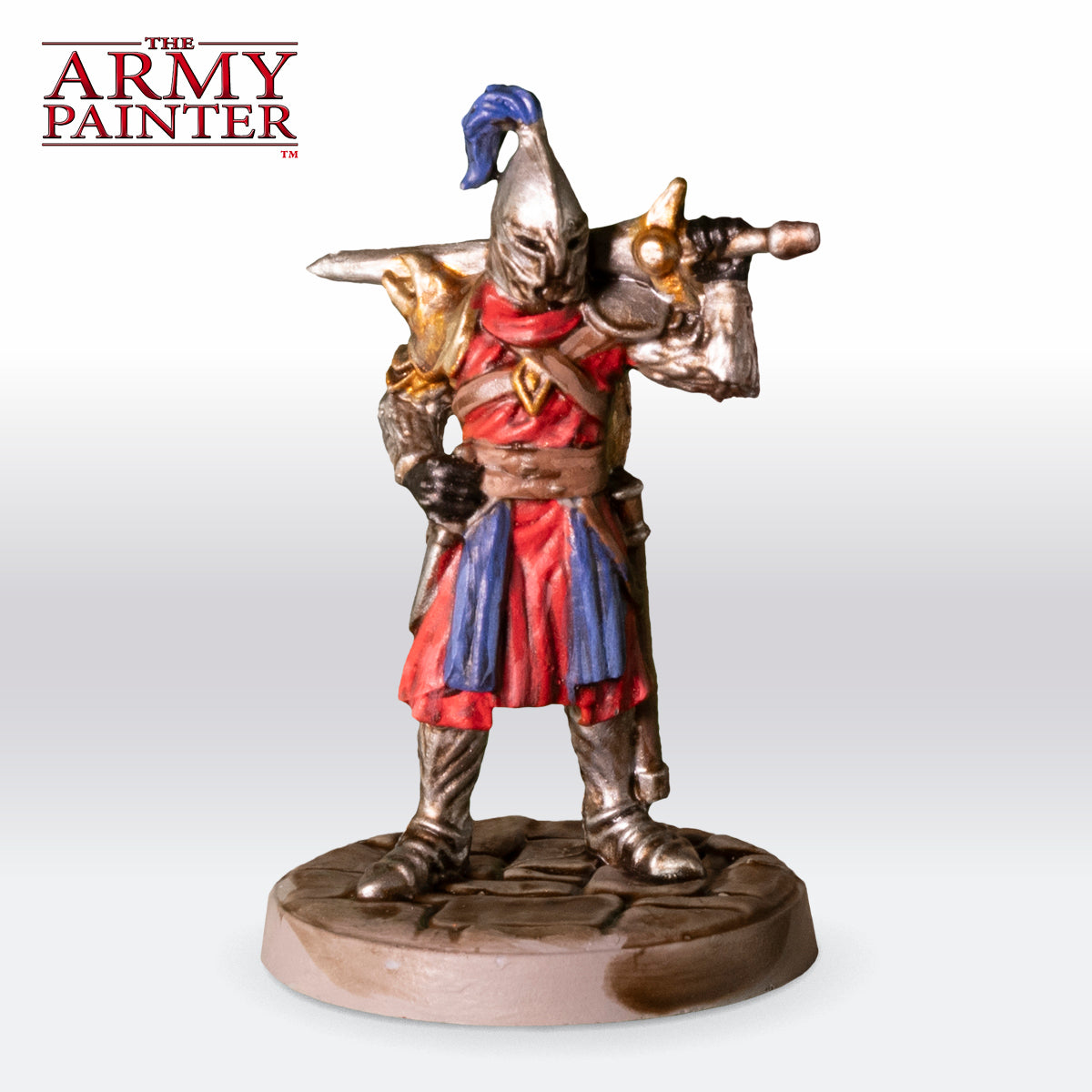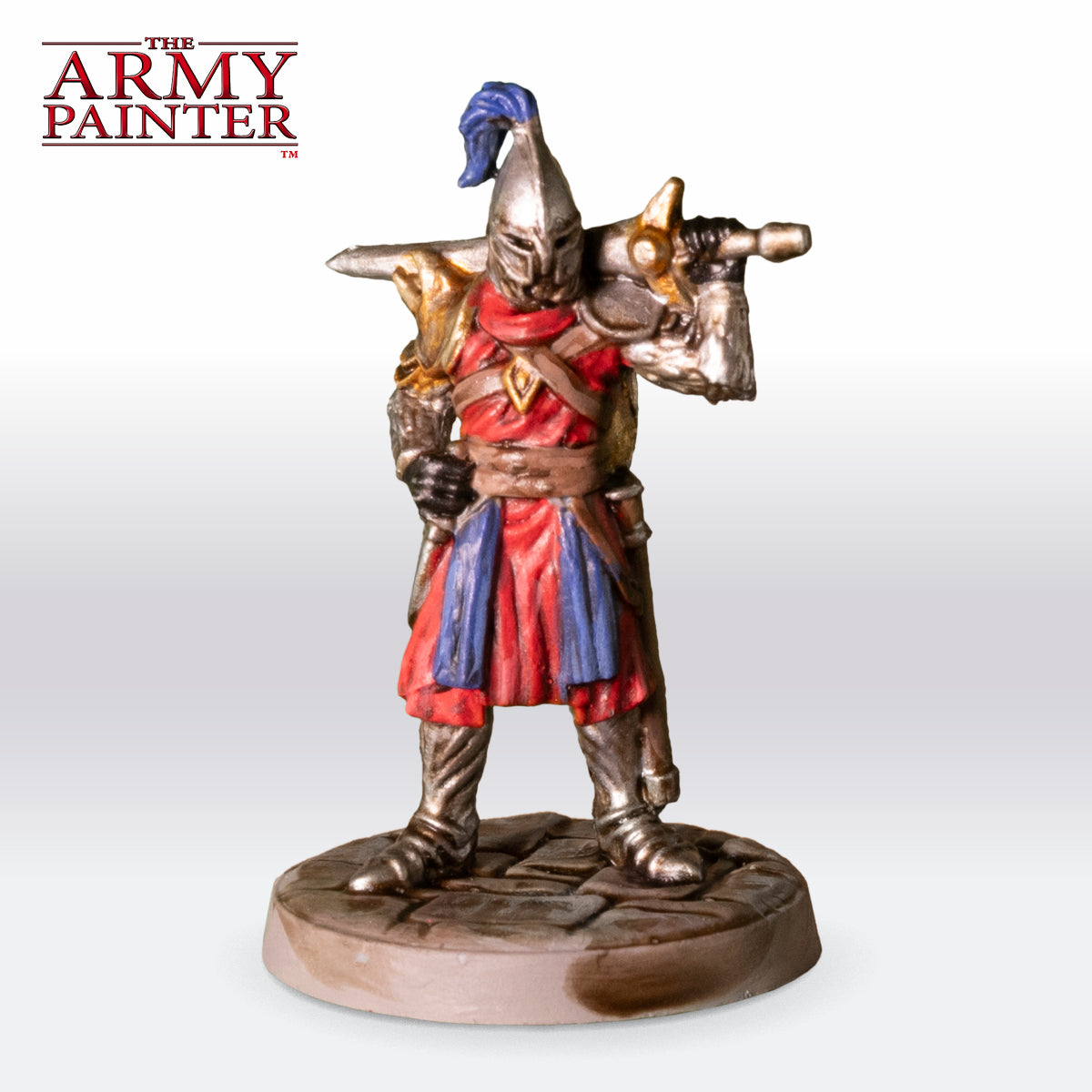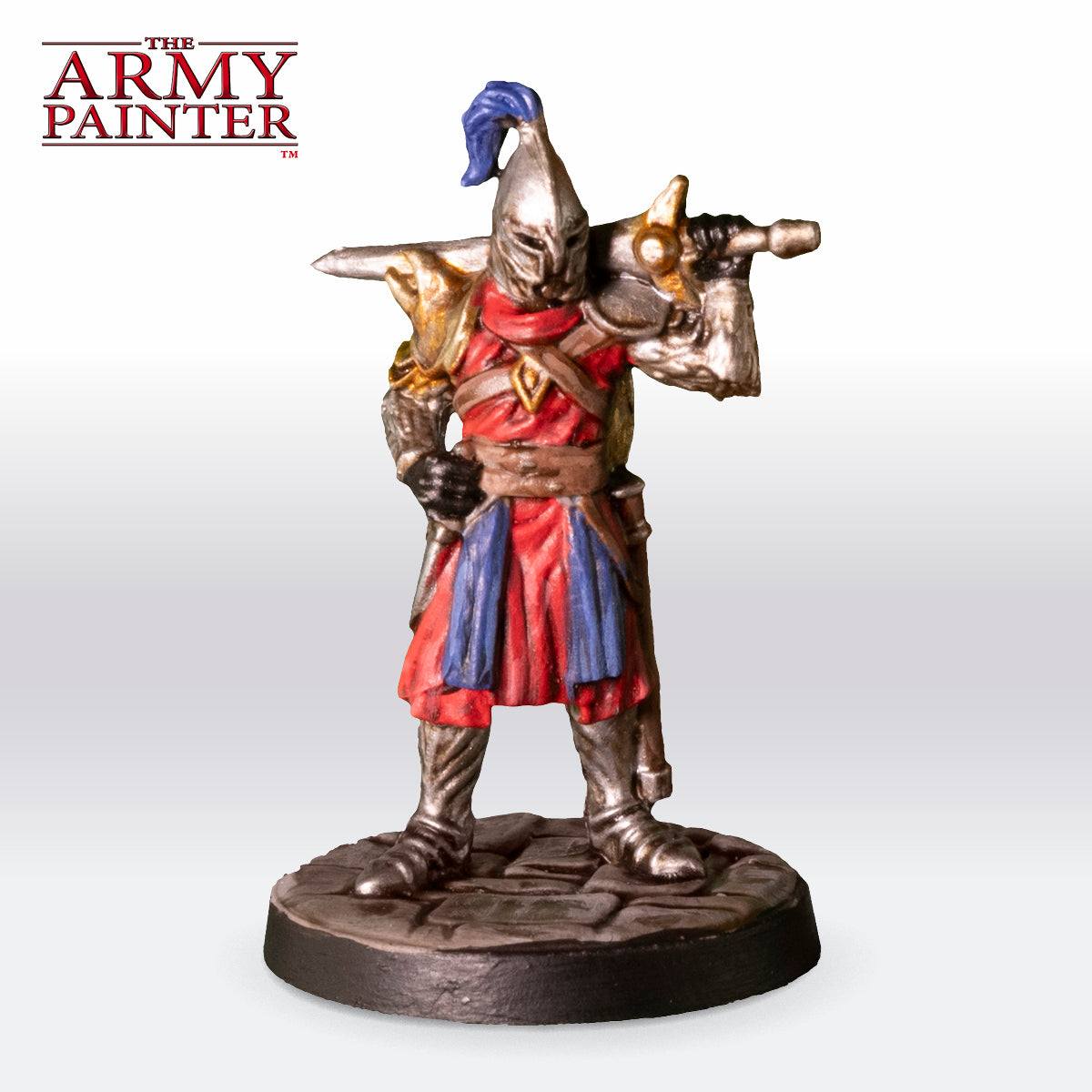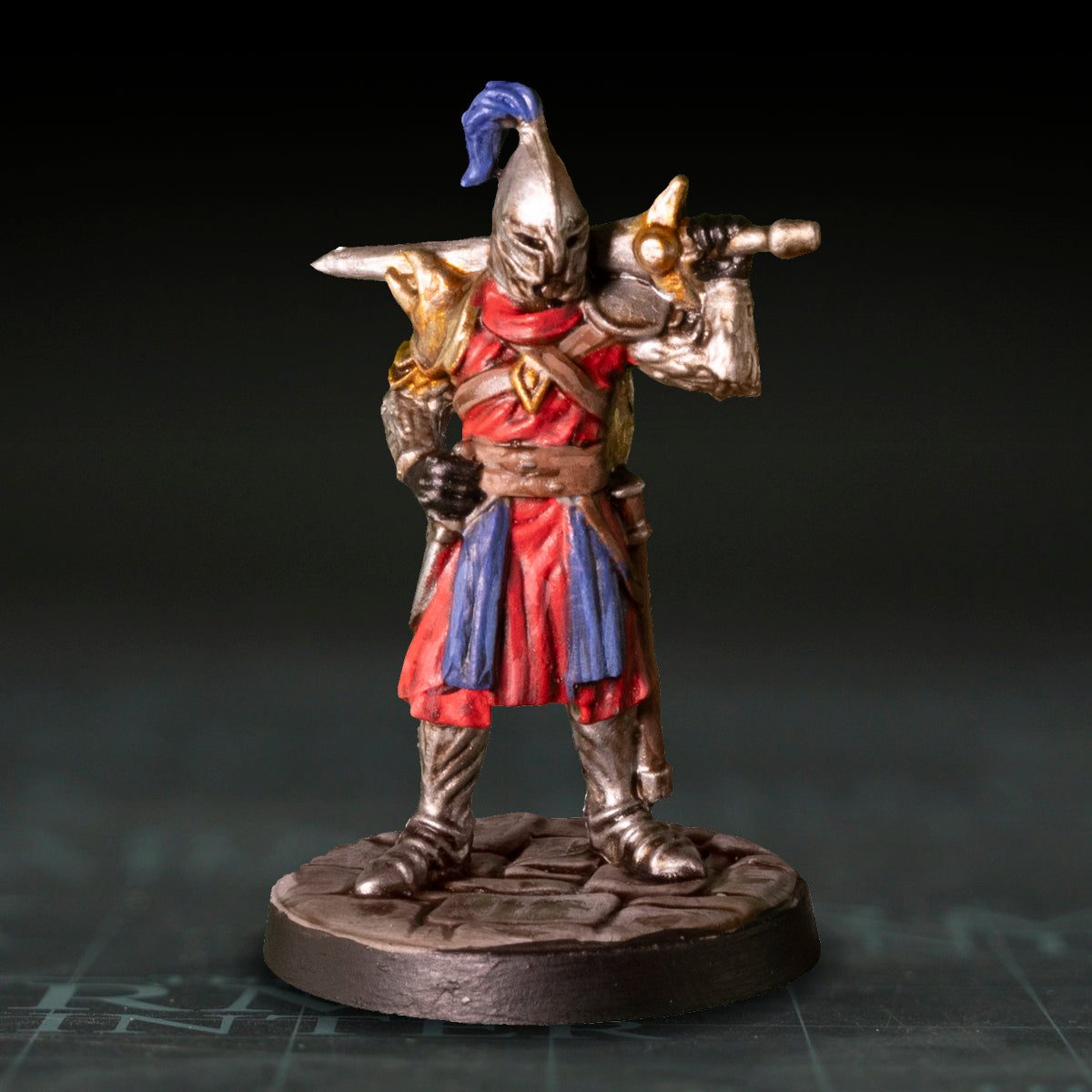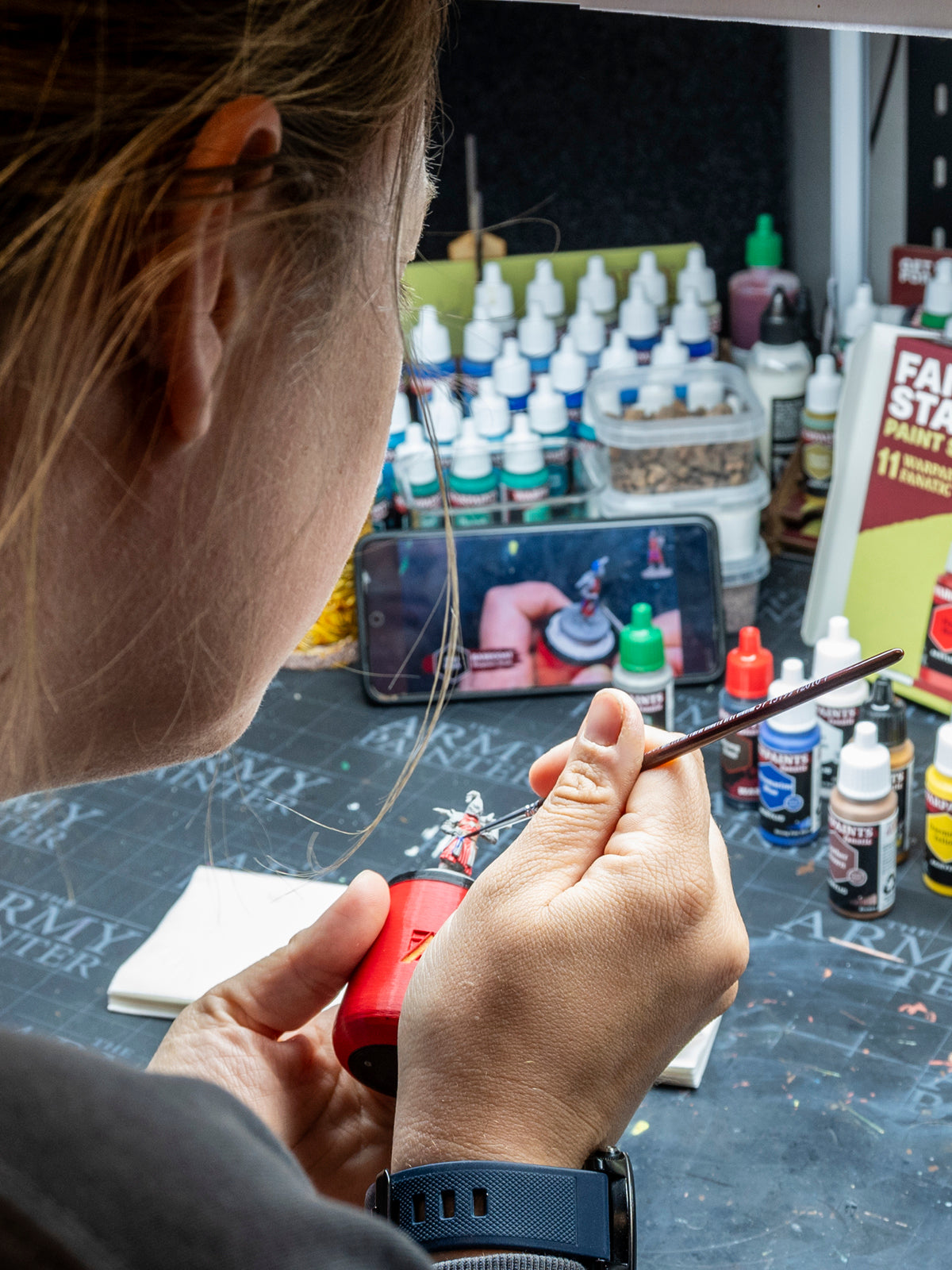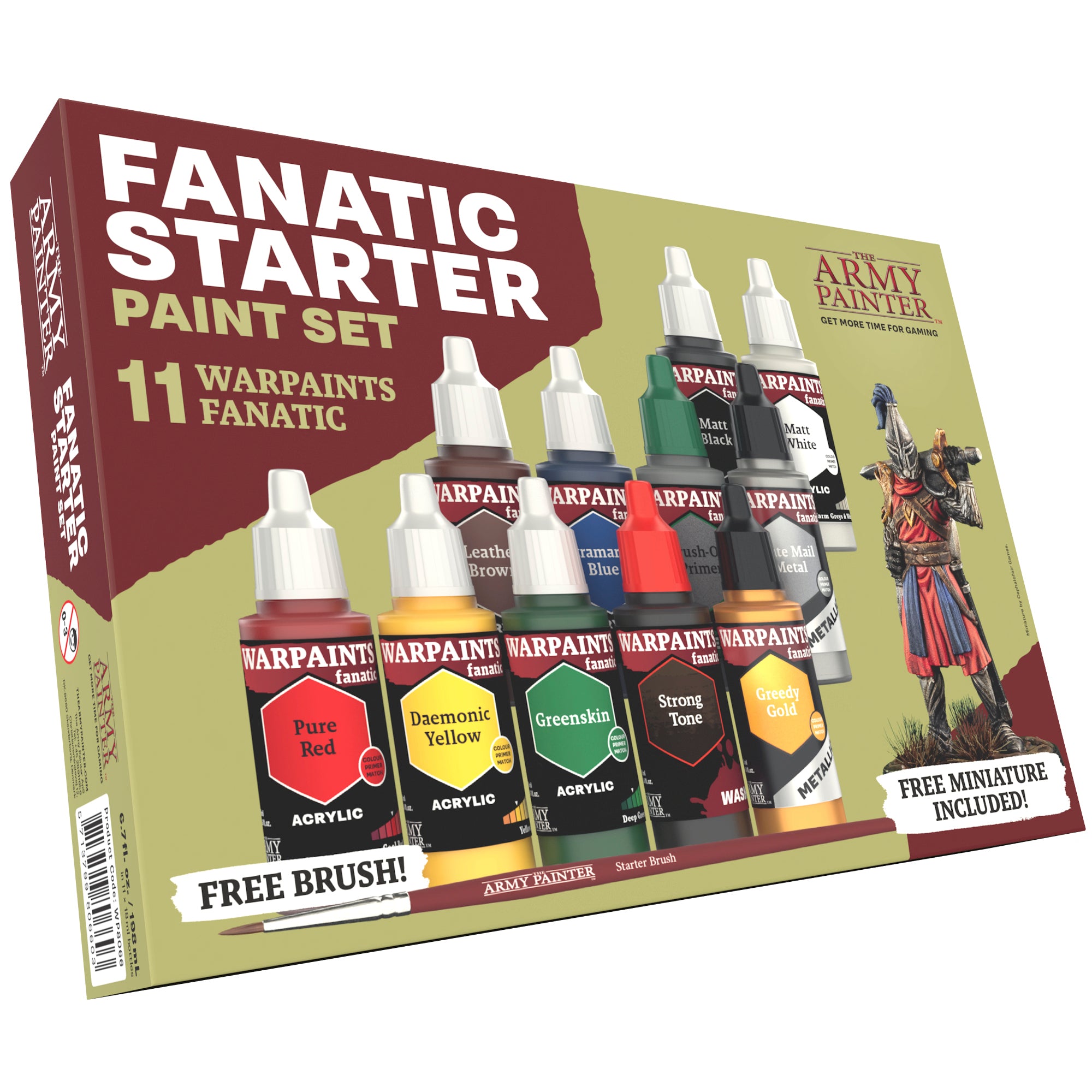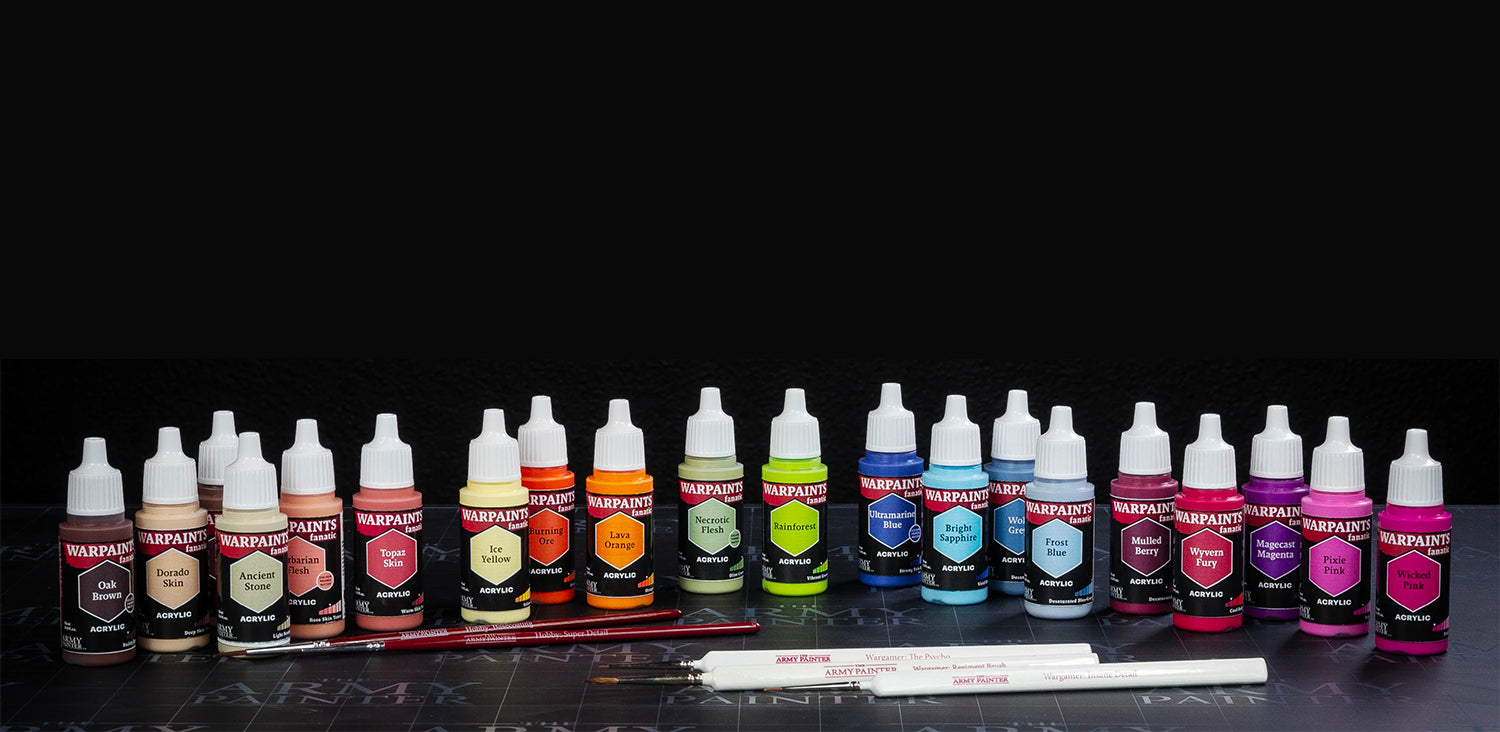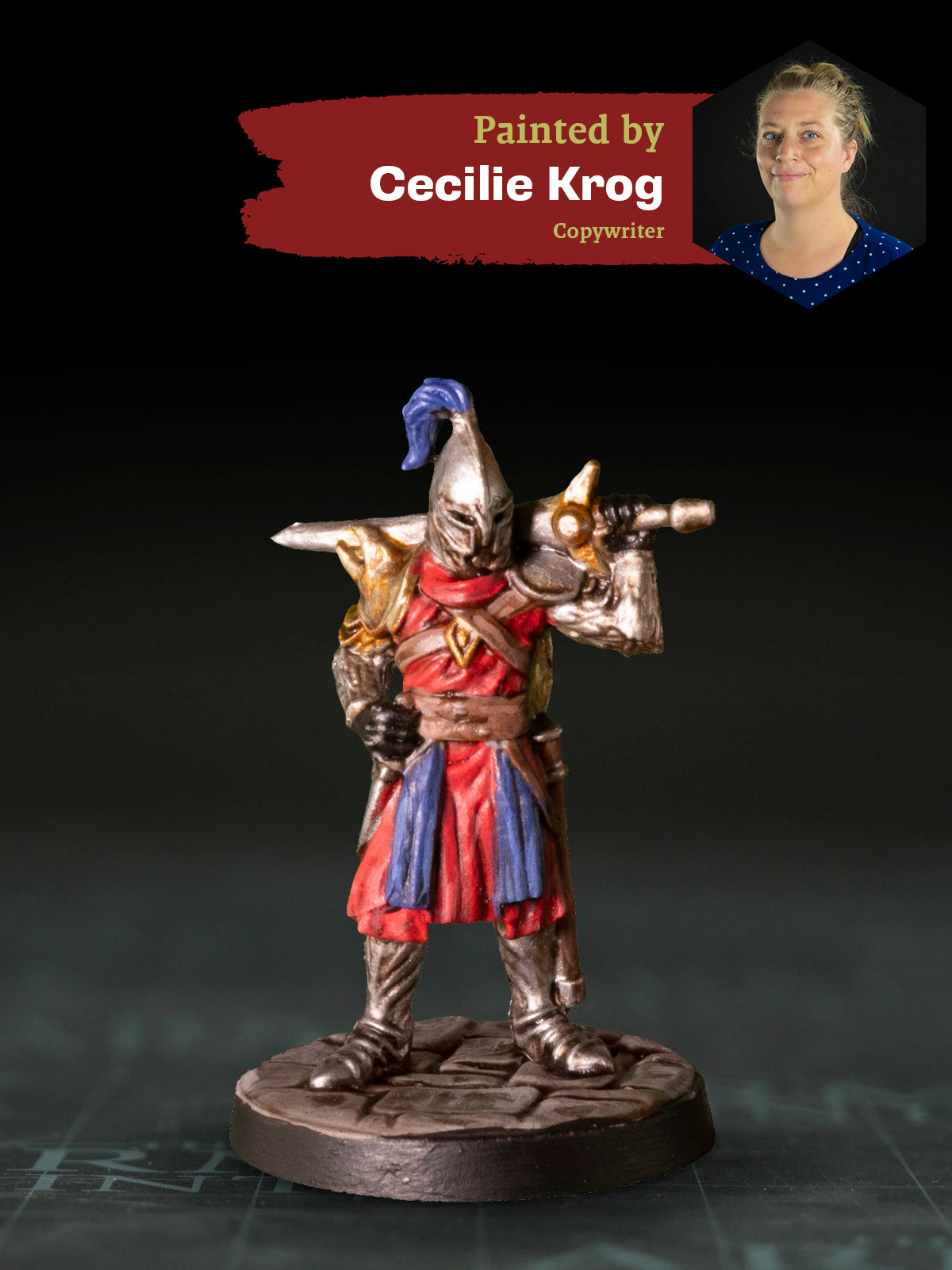
We’re Putting the Warpaints Fanatic Starter Set to The Test
Starting out in the miniature painting hobby can be daunting: Where do you start? What paints and brushes should you get? And what if you’re unsure of whether this hobby is for you?
That’s where the Warpaints Fanatic Starter Paint Set comes in: A paint set specifically designed to be the perfect entry point for anyone new to the hobby. It includes all the essential items needed—paints, a brush, and a Knight miniature from Cephalofair Games—along with a QR code for an easy-to-follow painting tutorial.
But does it hold up to that promise?
In this post, we're putting the Warpaints Fanatic Starter Paint Set to the ultimate test by having a complete newcomer to the hobby try it out.
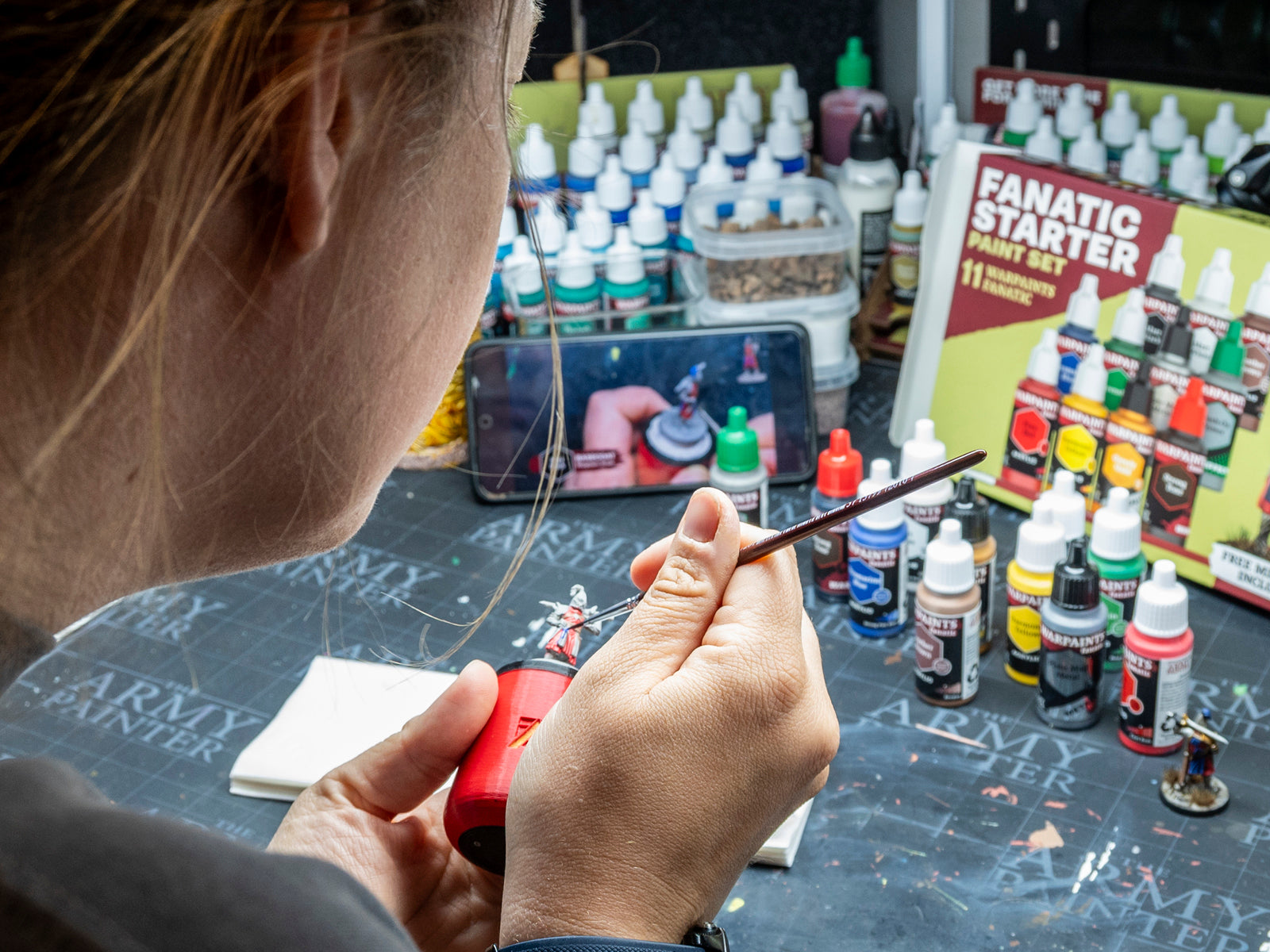
Meet Our Volunteer
To ensure this test is as authentic as possible, we’ve enlisted Cecilie, a copywriter at The Army Painter and self-proclaimed “total newbie” to the miniature painting hobby.
Her experience with painting miniatures is limited to The Army Painter Owlbear (which is required by all new employees to paint when they begin their career at the company) – and that’s pretty much it. She is therefore the ideal candidate to stress-test the Starter Paint Set.
Cecilie will follow the tutorial video produced by our studio team and use only the products from the Starter Set, replicating the experience of a true beginner.
Follow along in her painting journey below, complete with pictures of Cecilie’s mini for each step.
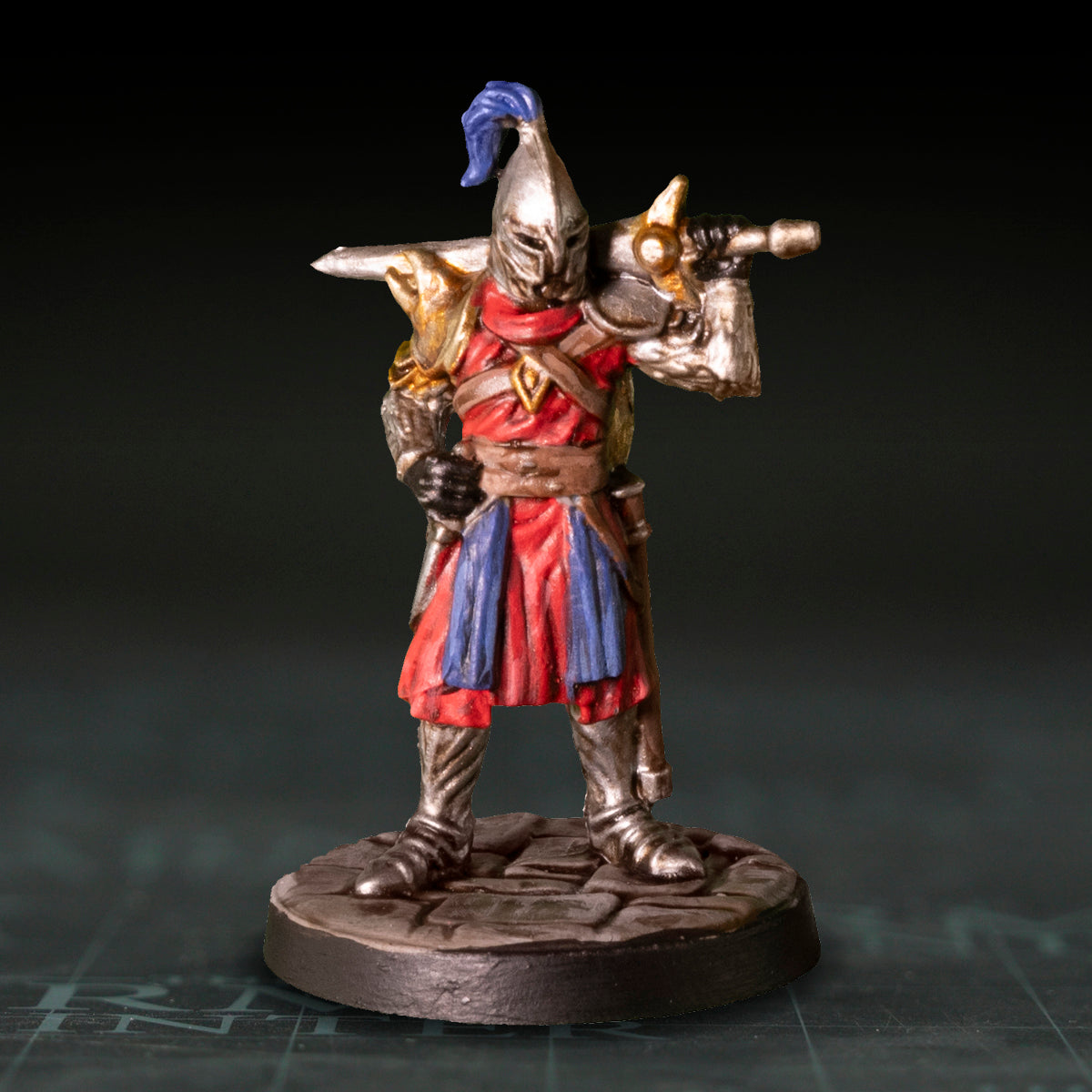
A Beginner’s Thoughts
Overall, this was a really fun experience and definitely made me want to paint more miniatures.
I was a bit intimidated at first and unsure what to do but following the painting tutorial from our YouTube channel made things easier. The tutorial was great. It broke down each step with clear, easy-to-follow instructions. Not only did it explain the “how,” but also the “why” behind each step, like why it’s important to prime your miniature before you start painting. This is very useful information for someone just starting out with painting miniatures.
The Biggest Challenge
I was surprised at how much my hands were shaking, which made it difficult to paint “inside the lines” and stay precise. If I had been at home – and not painting a mini to be used in this blog post – I likely wouldn’t have felt as nervous about painting outside the lines.
The most challenging part was, in my opinion, painting the highlights and refined highlights because I kept questioning where to place them. If I hadn’t been following the YouTube tutorial, I probably would have skipped this step.
The thing I learned, though, was that it’s “trial by error” – sometimes you get it right, other times you don’t – so the best approach is to just try. However, I did learn that you should consider the light source. Think about where the light would fall on the miniature and which parts would be lighter and darker.
Use the Resources Available
Also, as a beginner, you may feel slightly overwhelmed and unsure of what paints you need, especially with a range like Warpaints Fanatic, where there are 216 paints to choose from. However, with the Starter Paint Set I felt like I was being guided, as other (smarter and much more experienced people) had made conscious choices about which colours are both essential and necessary for a beginner.
Based on my experience, I think the Warpaints Fanatic Starter Paint Set is perfect for someone completely new to the hobby. You are provided with everything you need to get started in one box and don’t have to buy additional products, such as tools for assembling the mini. You can begin painting as soon as you get it.
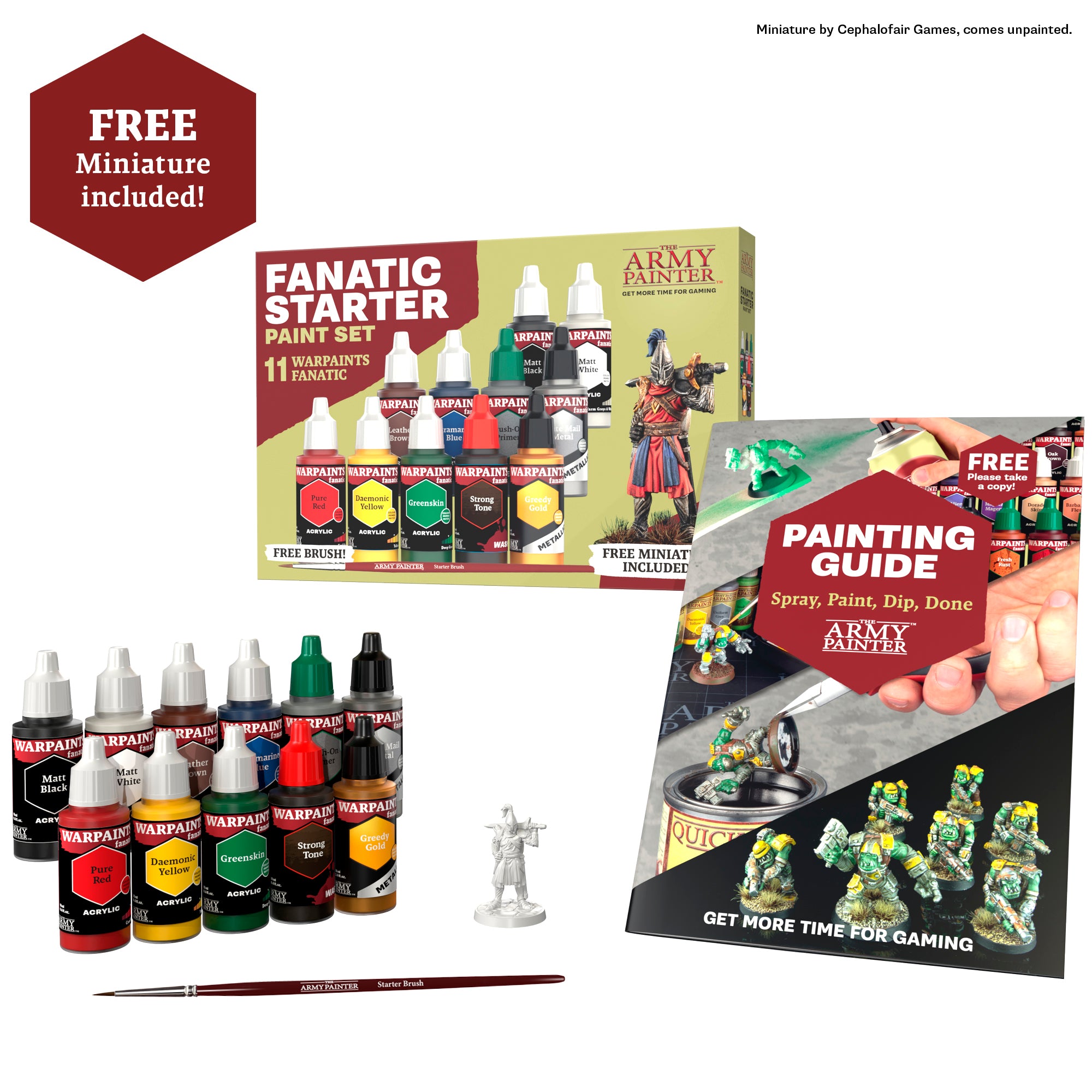
Try the Starter Paint Set Yourself
With unparalleled coverage, intense pigmentation, and smooth application, Warpaints Fanatic is easy enough for a beginner to use, fast enough for a gamer, and capable enough for the best painters in the world. And with the Warpaints Fanatic Starter Paint Set, it’s never been easier to dive into the miniature painting hobby.
But don’t just take our (or Cecilie’s) word for it – see for yourself! And if you’re ready to expand your selection of colours, check out some of the other Warpaints Fanatic paint sets and single paints.
Watch Video Tutorial
